Pallas' amphipod: A unique cancer of our water bodies. Survives where others float upside down (9 photos)
We all know who lives at the bottom of the ocean since childhood. But in the depths of ancient lakes, hidden from prying eyes, lives one special crustacean. It can be described using three “Rs”: Crustacean Jet Relic. But scientists, as always, complicated everything, so they called it Pallas's amphipod. 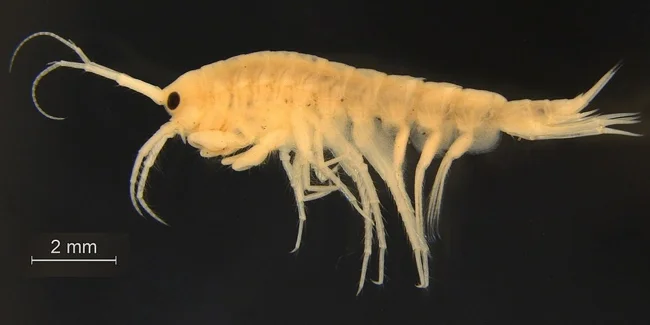
There are very few photographs of this species, so in this article we will use photographs of other species of amphipods. But know that our hero looks exactly like in this photo.
This representative of the amphipod order remembers mammoths and saber-toothed tigers: the crustacean comes from the harsh times of the Ice Age and has existed for at least 100,000 years. If he remembers dinosaurs, it’s bad: what can you do - age. The relic received its name not in honor of your old carpet, but after the name of the outstanding German naturalist - Peter Pallas. 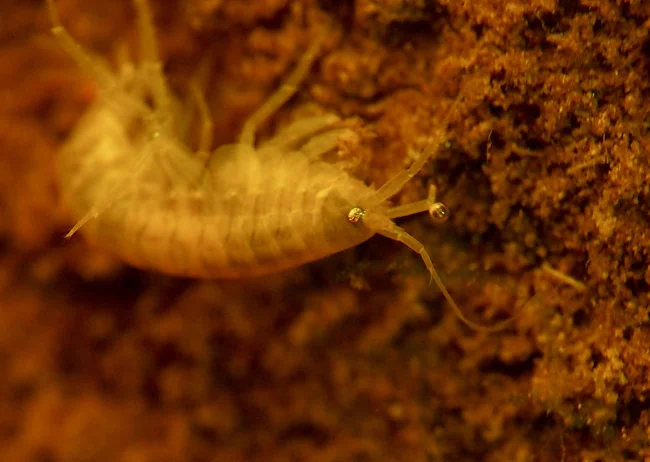
You can meet a rare crayfish not on a Dota server, as is usually the case. 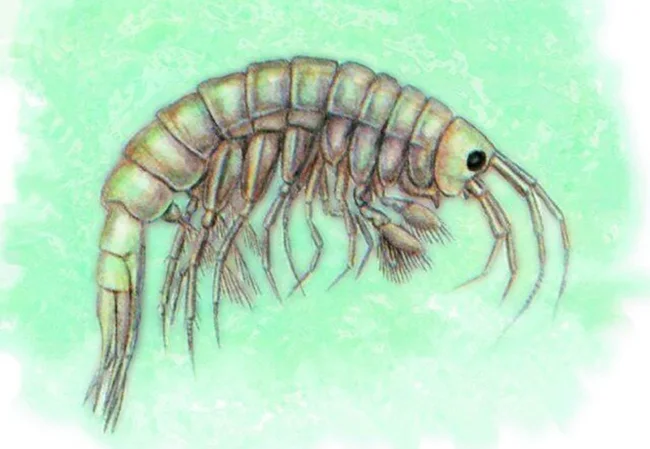
In a number of countries, for example, in Belarus and the Baltic countries, Pallas's amphipod is included in the Red Book.
Amphipods live in fresh water bodies at a depth of more than 10 meters. However, crustaceans begin to stir up a real gypsy camp at a depth of 40 meters: here their numbers are especially high. It's all about the temperature: our relic has nostalgia for the times of universal icing, so he feels most comfortable at temperatures below 10 degrees. 
The Baikal crustacean epishura understands our hero more than ever! He also prefers to hang out at the bottom and in the cold.
Pallas's amphipod is small - the length of its arthropod carcass is about 1-1.5 centimeters. Visually, it does not stand out in any way among its relatives: the same flattened body, the same small claws on the front pair of limbs. But behind the nondescript appearance lies a true survival champion! In this category, it places not only other crustaceans, but also the vast majority of other aquatic inhabitants. 
Amphipods come in different varieties, blue, white, red... The photo shows different types of crustaceans from Lake Baikal.
It’s never too late for the Pallas amphipod to drink Borjomi, because it lives calmly in waters with high mineralization, in which other crustaceans die - just like that! The indestructible cancer is able to survive in water with a critical oxygen deficiency. If water normally contains 4 milligrams of oxygen per liter of water, then our hero survives at a meager concentration of 1 mg/l - two! Our glacial Siberian is distinguished not only by its phenomenal durability, but also by its exceptional ecological plasticity. Cancer survives any climatic changes once or twice or three times! In general, in terms of survival rate, amphipods get 8 out of 10 tardigrades! 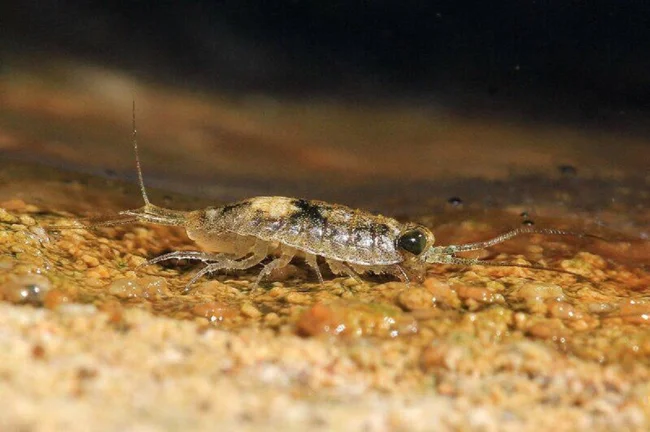
I will definitely survive (gammarus crustacean)!
The amphipod has 5-7 pairs of long legs, which it uses better than any land sprinter. A sharp push with the paws and the auxiliary beating of special plates on the abdomen create a jet of water that launches the amphipod like Elon Musk launches a rocket. In addition, the arthropod relic could teach you how to do a plank correctly: by nature, the “humpbacked” amphipod stretches its back into a perfectly straight line during movement. Thanks to this set of techniques, the reactive crayfish is able to move faster than the guy next door who heard his car alarm at night. 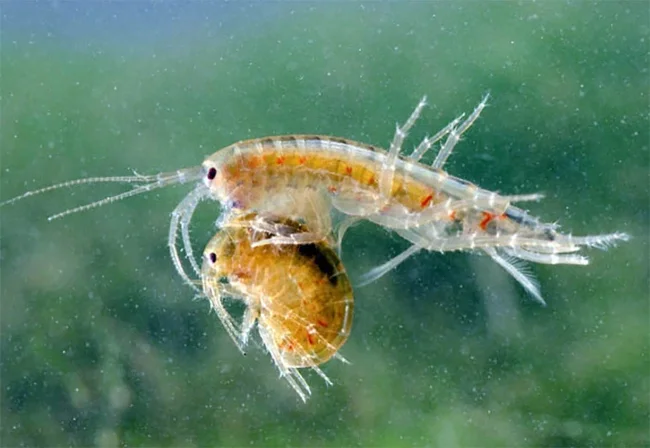
Come on, don't slouch (amphip gmelinoides fasciatus)!
If the amphipod lived in the world of the Witcher, then not only anti-relic oil, but also anti-corpse-eater oil would help in the fight against it. This small “drowner” feeds on decaying animals and rotting plants. This is how crustaceans are usually caught for research, lured with their favorite delicacy - rotten fish. 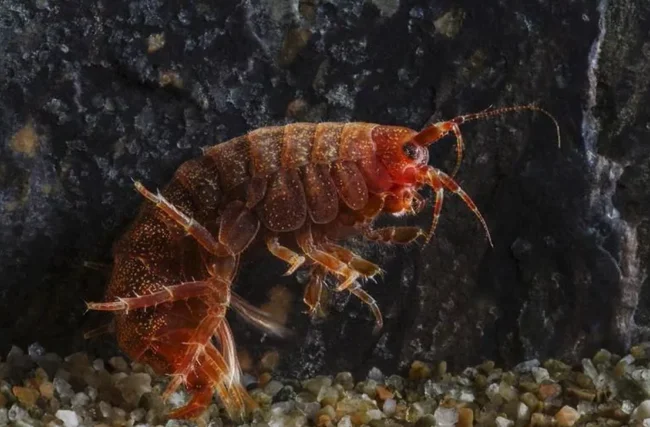
The survival rate of Pallas amphipods is also related to the peculiarities of their reproduction. In other relict brethren, females make only one clutch, after which they die. And reactive crayfish are not only in no hurry to give up their lives against the backdrop of postpartum depression, but also courageously shoulder the burden of mothers of many children. During their lives, they bear several litters, each of which contains several dozen eggs. Therefore, amphipods are not only “small and tenacious,” but also extremely prolific. 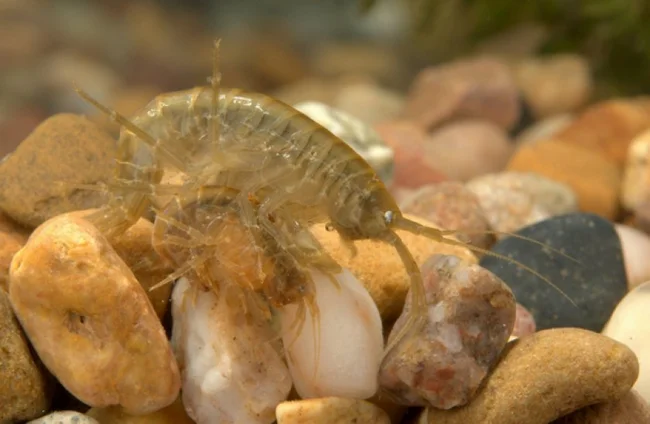
Amphipods have a very touching courtship period. The male catches the female, and the bonded pair stays together for about a week. Romance, well (Gammarus crustacean).
The establishment of amphipod terror is hampered by fish, for which they are a favorite delicacy. In this, scientists see another advantage to the active breeding of crustaceans: a champion in survival in the underwater world could become an excellent food for fish in reservoirs where any other small living creature simply cannot survive.

